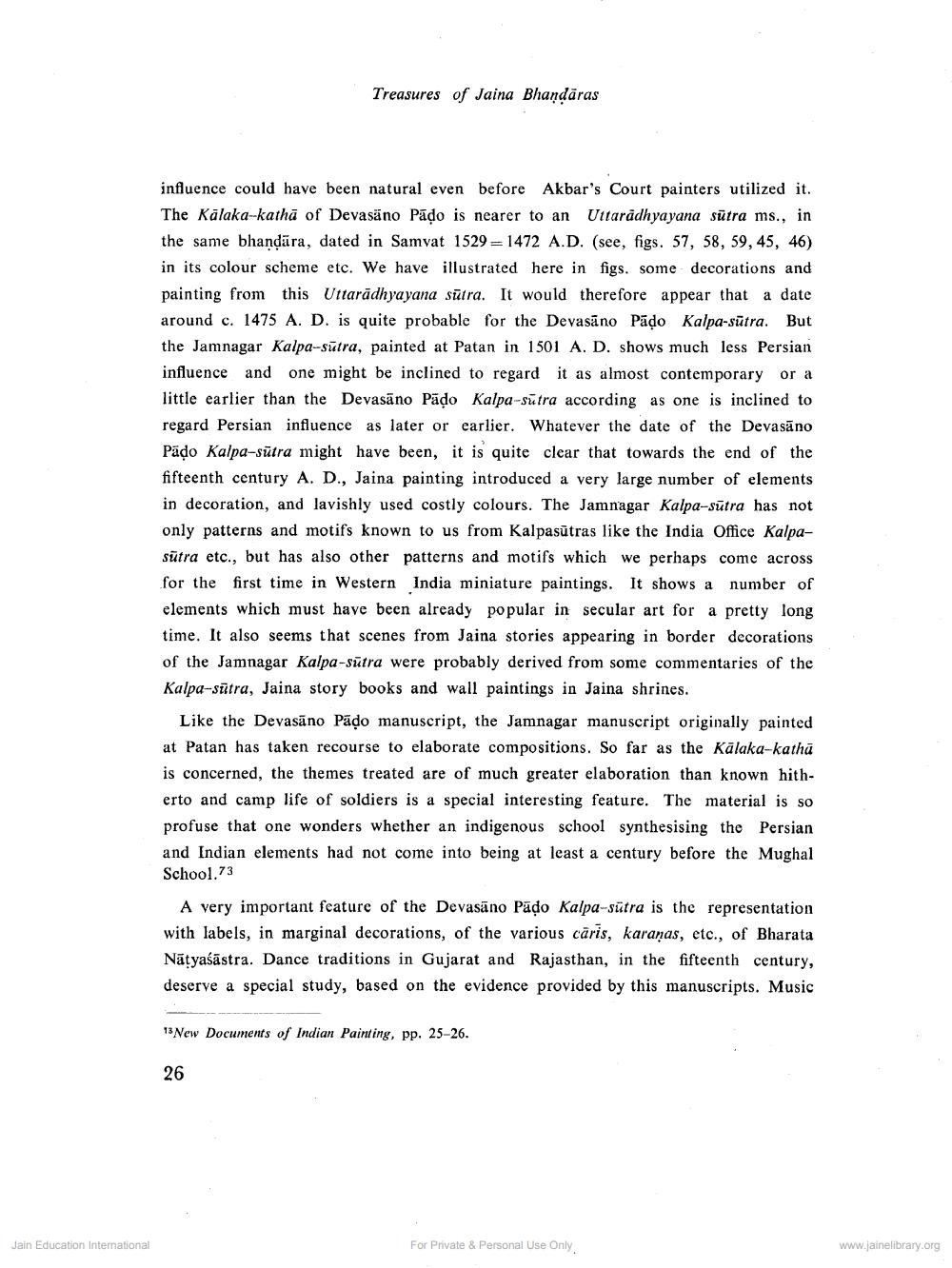________________
Treasures of Jaina Bhandāras
influence could have been natural even before Akbar's Court painters utilized it. The Kalaka-kathā of Devasäno Pado is nearer to an Uttaradhyayana sūtra ms., in the same bhandāra, dated in Samvat 1529= 1472 A.D. (see, figs. 57, 58, 59, 45, 46) in its colour scheme etc. We have illustrated here in figs. some decorations and painting from this Uttarādhyayana sūtra. It would therefore appear that a date around c. 1475 A. D. is quite probable for the Devasāno Pādo Kalpa-sūtra. But the Jamnagar Kalpa-sūtra, painted at Patan in 1501 A. D. shows much less Persian influence and one might be inclined to regard it as almost contemporary or a little earlier than the Devasāno Pādo Kalpa-Sūtra according as one is inclined to regard Persian influence as later or earlier. Whatever the date of the Devasāno Pāļo Kalpa-sūtra might have been, it is quite clear that towards the end of the fifteenth century A. D., Jaina painting introduced a very large number of elements in decoration, and lavishly used costly colours. The Jamnagar Kalpa-sūtra has not only patterns and motifs known to us from Kalpasūtras like the India Office Kalpasūtra etc., but has also other patterns and motifs which we perhaps come across for the first time in Western India miniature paintings. It shows a number of elements which must have been already popular in secular art for a pretty long time. It also seems that scenes from Jaina stories appearing in border decorations of the Jamnagar Kalpa-sūtra were probably derived from some commentaries of the Kalpa-sūtra, Jaina story books and wall paintings in Jaina shrines.
Like the Devasāno Pāļo manuscript, the Jamnagar manuscript originally painted at Patan has taken recourse to elaborate compositions. So far as the Kālaka-kathā is concerned, the themes treated are of much greater elaboration than known hitherto and camp life of soldiers is a special interesting feature. The material is so profuse that one wonders whether an indigenous school synthesising the Persian and Indian elements had not come into being at least a century before the Mughal School.73
A very important feature of the Devasāno Paço Kalpa-sütra is the representation with labels, in marginal decorations, of the various caris, karanas, etc., of Bharata Nātyaśāstra. Dance traditions in Gujarat and Rajasthan, in the fifteenth century, deserve a special study, based on the evidence provided by this manuscripts. Music
13New Documents of Indian Painting, pp. 25-26.
26
Jain Education International
For Private & Personal Use Only
www.jainelibrary.org




